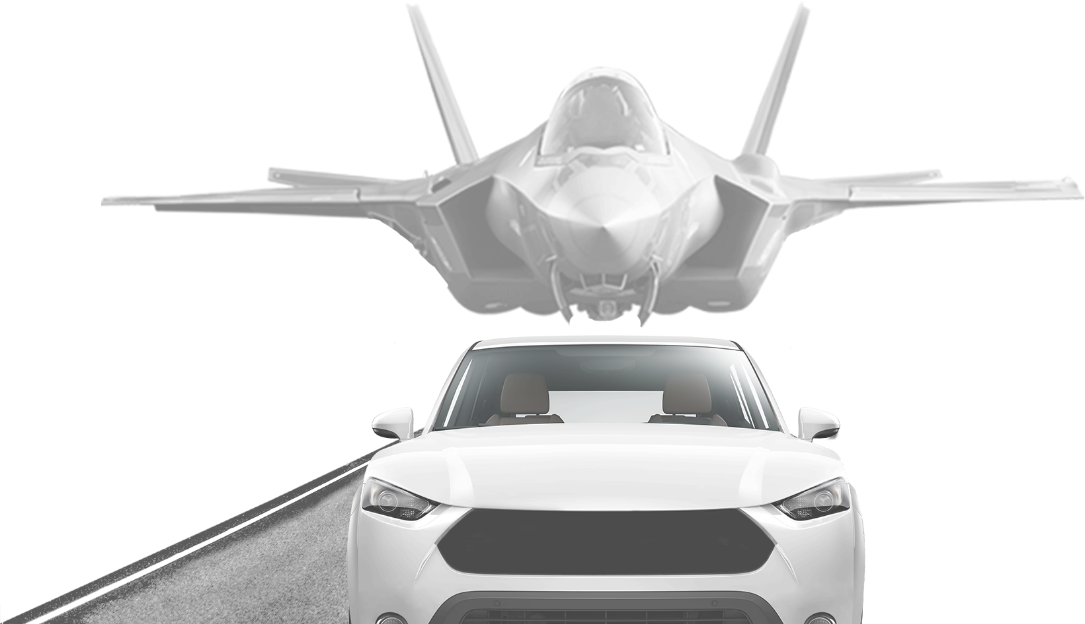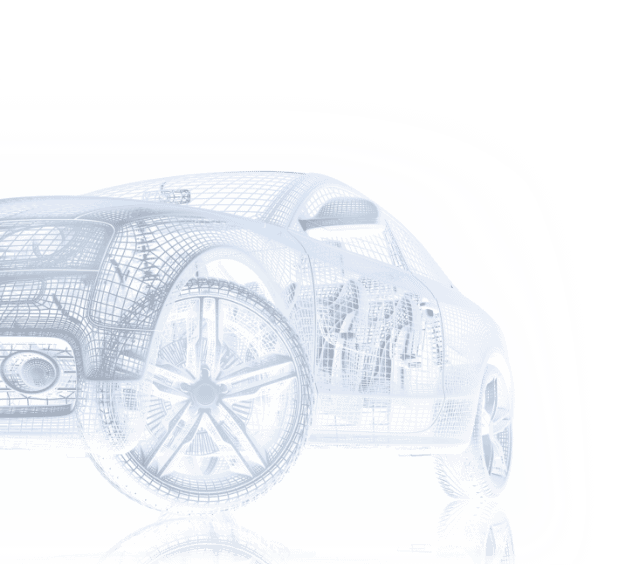
“ E/E Zonal Architecture” is a concept that reflects the technological shift, that addresses the increasing complexity and computational demands of the automotive electronic/electrical (E/E) system to meet the expectations of the new generational automotive consumer and industry trends.
The new generation of automotive consumers expect constant internet connectivity, a fully customizable driving or riding experience, as well as personalized entertainment and functionalities. Simultaneously, consumers expect to feel safe and secure, while enjoying the latest, modern features on-demand, in real-time and over-the-air as they download different applications and services from vehicle “app-stores”.
In fact, the vehicle is no longer the focal point in the consumer’s mind, rather it is the mobility service or mobility experience that it provides.
Webinar: Transitioning to a Safe & Secure Zonal Architecture
Moving from the CAN bus architecture to a modern high speed Ethernet communication network
Consolidating multiple functions that are today served by separate ECUs into ECUs that are multi functional
Consolidation of ECUs together with new topologies for the vehicle networks to reduce the needed cabling length, weight, and cost to a fraction of what it currently is
The vehicle software architecture is evolving towards modular software that can accommodate the needed flexibility, security and agility for the new software-defined vehicles
The current E/E Automotive Architecture has reached its scalability limits .
The E/E Zonal Architecture concept developed for the automotive industry introduces two new device classes, the Vehicle Server and the Zonal Gateway, that reduce the number of physical ECUs and enable the use of Ethernet and a variety of flexible or hybrid topologies.
The Vehicle Server optimizes the computational resources by consolidating the number of physical ECUs, reducing H/W components, wiring results in less weight and overall cost reduction.
The Zonal Gateway acts as a local connectivity hub relaying data through a single high-speed Ethernet link to the backbone.
Scalability of Functionality increases with the use of the high-speed Ethernet communication network which can provide network modularity and the interchangeability of components. This alone eliminates inefficiencies in the automotive supply chain production line assemblies and offers an endless number of possible network configurations.
The Zonal E/E Architecture empowers the engineer to be innovative in designing and developing new ways to meet customer demands/expectations, as well as industry trends.
Complexities of the current E/E Automotive Architecture are no longer manageable given the customer demands and industry trends.
Scaling up functionality is the key to keeping the new generation of drivers happy as they transition from being just drivers to becoming subscribers of services.
The Zonal E/E Architecture concept is a technical evolution that is a robust solution to meet the new generation of driver demands through a high-speed communication network, the creation of multi-function ECUs and vehicle software Service-Oriented Architecture.
The consolidated platform provides lower life-cycle costs, high reliability, and flexibility to ensure vehicle E/E architectures will be able to meet the changing market trends and consumer demands, enabling the automotive paradigm shift to a service-oriented vehicle where the passenger (or driver) are the focal point rather than the vehicle itself.
The new generation of automotive consumers expect to feel safe and secure, while enjoying the latest, modern features on-demand, in real-time and over-the-air applications and (subscription based?) services.
The E/E Zonal Architecture concept is a technically advanced innovative solution to address the computational and communication requirements to support the demands of the changing automotive industry and needs/expectations of the new generational consumer.
As scaling up through software increases, the industry will begin to change where upgrading to components through software can be done simply by subscription-based services for the life of the vehicle.
This agility is a sizable business opportunity in the automotive aftermarket for OEMs who can create recurring revenues from cars even after they are sold. Upgrading individual software components of a vehicle is very appealing to consumers who would find it much more affordable than replacing the entire vehicle
The possibility of adding or improving vehicle features through a premium software upgrade could be sold as a service, much like a mobile phone plan today. This subscription-based model will convert the drivers of vehicles to subscribers of services, creating new revenue streams that can remain intact for the entire vehicle lifecycle.
 Vehicle Server
Vehicle Server
 Zonal Gateway
Zonal Gateway
Over the last 50 years, individual ECUs have been added to cars for managing specific vehicle functionality, including engine and transmission control, climate control, anti-lock braking, park assist and more. Controller Area Network (CAN) bus was introduced to enable the disparate systems to efficiently communicate with one another. While older cars may have up to a dozen ECUs “talking” to one another, a new vehicle may have 150 or more independently operating ECUs using multiple network protocols with overlapping or redundant services. From 2010-2016 software code in vehicles and their ECUs grew from 10 million lines of code to 150 million lines of code
One of the biggest challenges facing today’s vehicle networks is the vast amount of data that is produced—and will exponentially increase as vehicles become increasingly autonomous and connected and are required to process vehicle-to-vehicle and vehicle-to-infrastructure communications. Transferring and hosting this data is also very costly and increases vulnerabilities to hacking. Today’s ECUs offer the computing equivalent of 20 personal computers and transmit more than 25 gigabytes of data per hour but they are severely limited by the CAN’s data transfer rate of 1 Mbps—a far cry from the 1 Gbps we receive from our home and office Ethernet networks.


Inspiration Outside the Automotive Industry
GuardKnox is at the cutting edge of innovation in the automotive industry as it leverages its deep-roots in defense aviation from the Israeli Air Force and brings this technological approach to the automotive industry providing secure, service-oriented, and high-performance computing solutions

Ethernet frees the E/E Architecture from existing limitations, opens up new opportunities and simplifies complexity.
There are 3 distinct leading network configurations:
Moving from a theoretical maximum of 1 Mbps (CAN) to a very real 1000 Mbps (Ethernet) line rates poses a technological challenge.
The Zonal E/E concept completely decouples functionality from physical hardware. The computational elements are treated as a pool or a cloud of resources ready to be distributed and assigned to tasks strictly or on-demand. By changing the way we think of the E/E Architecture, the options are virtually unlimited. In fact, functionality is no longer bound to the vehicle itself, it can be executed on a remote cloud server, similar to the way smartphone ecosystems function today.
Functionality as a service is a radical new way of thinking in automotive, basically creating a whole new industry. Mobility as a service and shifting consumer preferences changes the nature and almost the very definition of a car. The younger generation is more concerned with whether they can link their phone to the head unit and continue listening to their favorite music from where they left off on their personal computer. Not only do they not prioritize the mechanical aspects of the vehicle, they prefer to not be driving at all and instead use that time for other activities which they see as more valuable. Scaling up functionality is key to keeping this new generation of customers happy as they transition away from being just ‘drivers’ to becoming ‘subscribers’ of services.
Fewer physical hardware components means less projects which in turn means less suppliers and vendors. As scaling up through software catches on, the industry will shift, business models will change, and new innovative and potentially smaller players and suppliers facing lower barriers to entry will emerge. OEMs are another major player in this ecosystem as they have started developing and producing their own ECUs and technologies as a foundation or unique selling point. This is already happening with the emerging industry disruptors such as Tesla and other Silicon Valley startup style OEMs.
We are witnessing a major shift in the way business has been conducted for years in the industry, which goes hand in hand to a greater automotive paradigm shift. Gone are the days of decades-long contractual obligations to produce and supply components to specific geographical locations. With the rapid transition to software-based, abstracted functionality, there is no physical production of parts and spares and no delivery. And there is always the possibility of replacing a software module with someone else’s potentially better and cheaper solution. This can even happen years after the vehicle is already in the customer’s hands. The remaining physical components could be in danger of being replaced by different vendors, in turn creating OEMs that are much more resilient to shortages and supply chain disruption by necessity. On the other hand, upgrading individual components is much more affordable than replacing the entire vehicle, unlike smartphones, which most consumers can afford to replace every few years. This is a prospect OEMs will surely exploit to create recurring revenues from vehicles already sold. This will boost the value of used yet upgraded cars and further push sales into this market space. The possibility of having feature support, which may be accomplished by a simple premium software upgrade, can be sold as a service much like a cellular plan today. This subscription-based model will convert the drivers of vehicles to subscribers of services, create new revenue streams and remain intact for the entire vehicle lifecycle.
Long gone are the days of purely mechanical machines transporting goods or people from point A to point B. Propelling this paradigm shift will require a fundamental rethink of the traditional automotive supply chain as we’ve known it over the past century.
The connected cars of the 2020s are software-defined computers on wheels running on hundreds of millions of lines of code. Automakers alone cannot produce the secure, sophisticated technology required to power today’s vehicles.
The current automotive supply chain is struggling to implement the required technological changes and advancements to foster the high-speed communication and application hosting based computing platforms that are secure by design – and answer their consumers mounting wants and needs.
Rethinking and redesigning decades old architectures, networks, and components to be able to match economic and consumer trends requires synergistic relationships and partnerships with emerging, technological driven suppliers as the automotive industry shifts from the traditional vehicle blueprint to zonal architecture, the new era of mobility.
There are a number of technological challenges in transitioning to a Zonal E/E Architecture. Below is a summary of some considerations and challenges:
